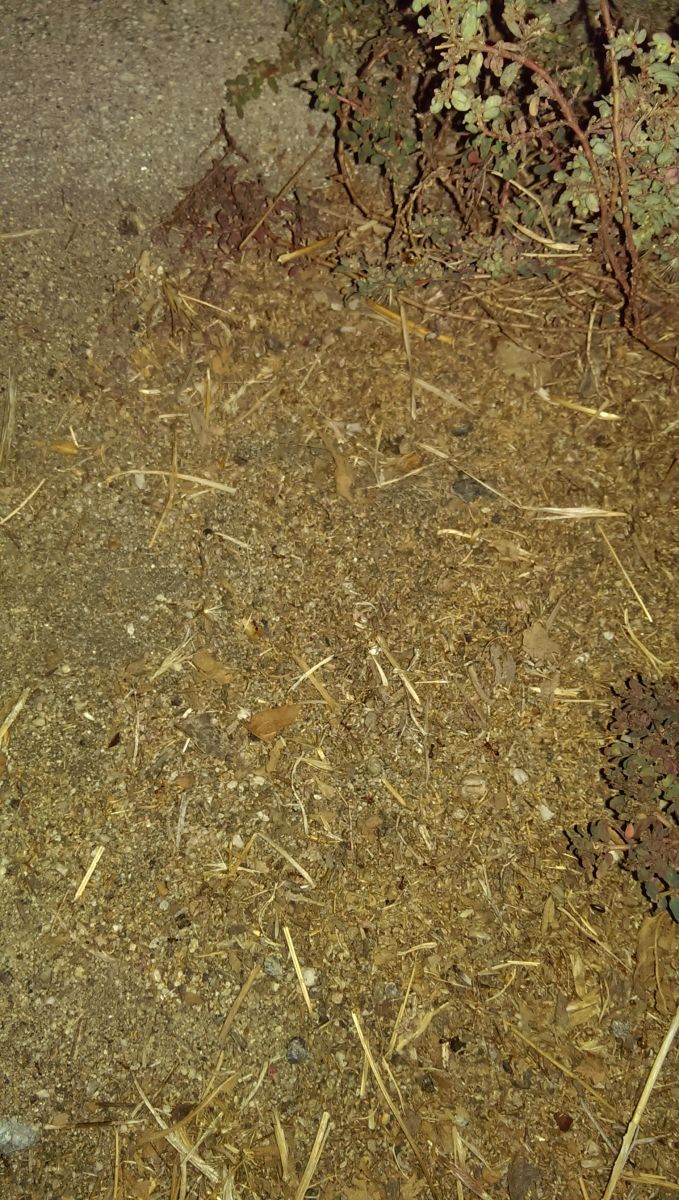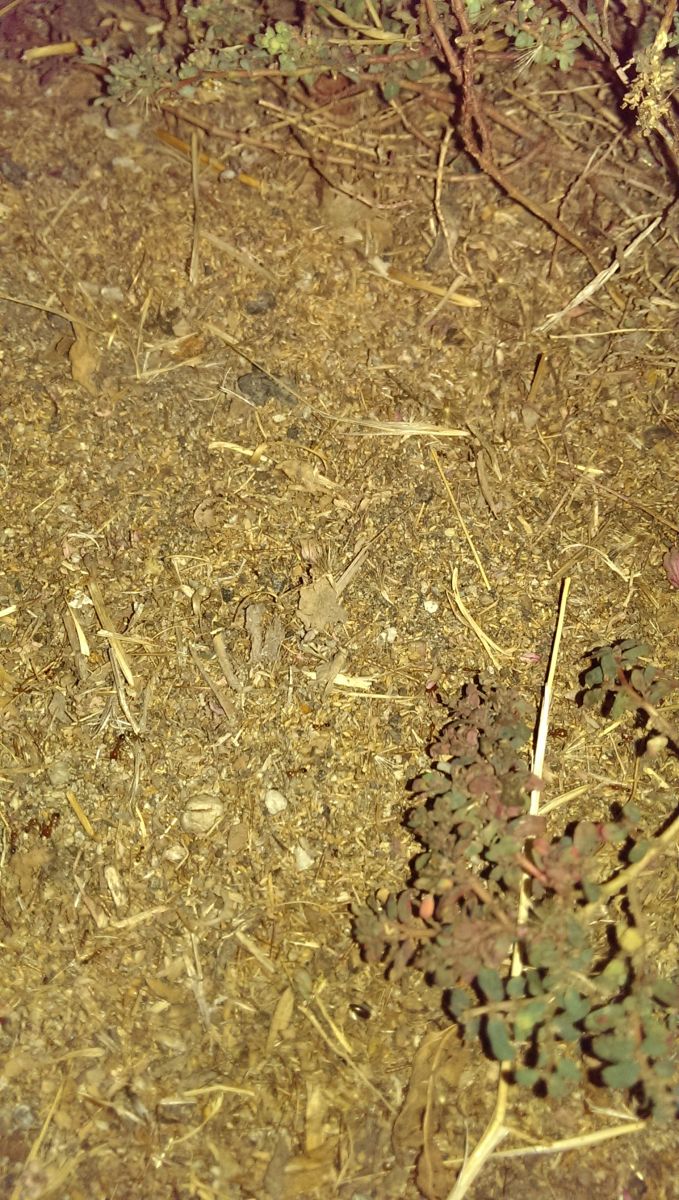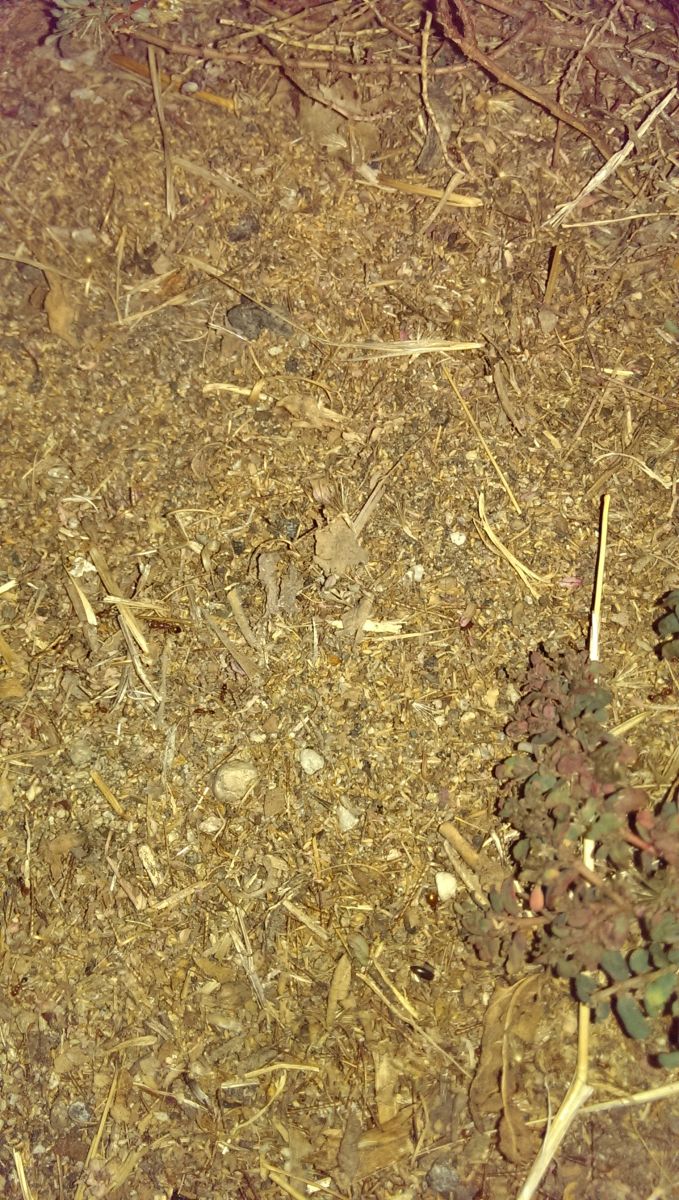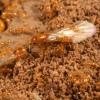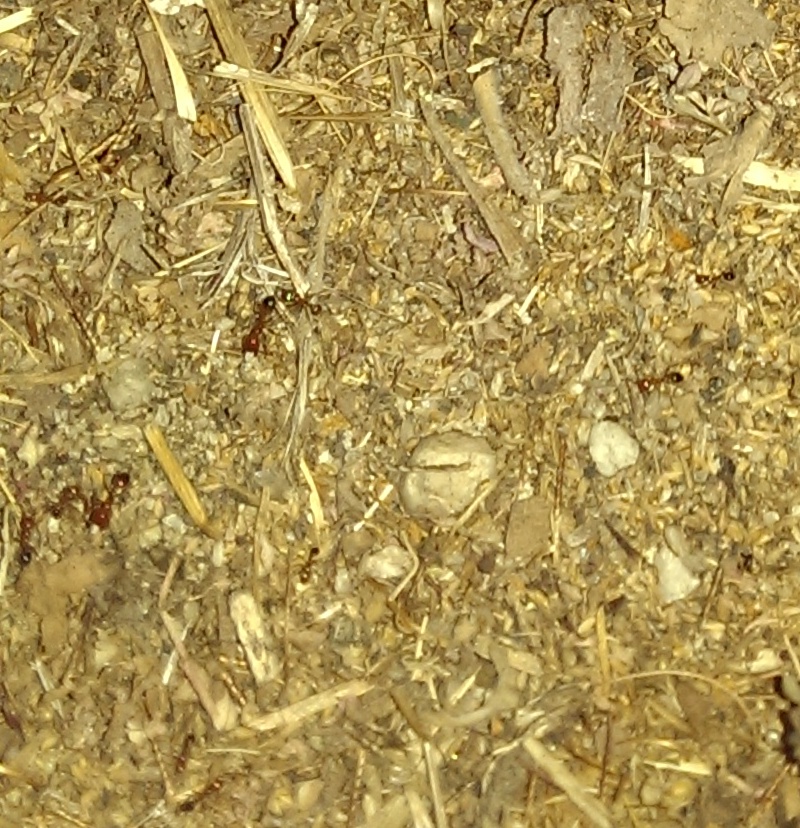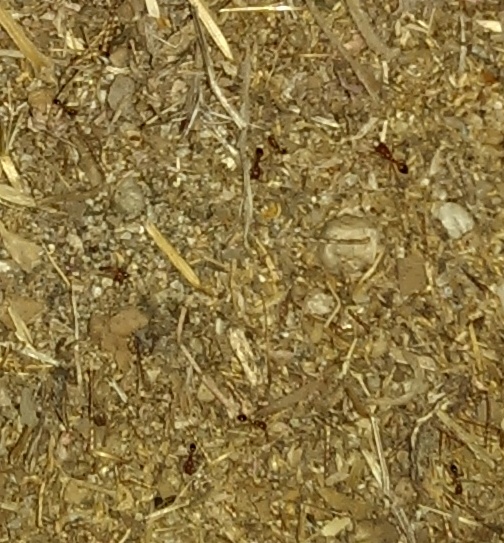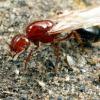I was out checking out some Pogonomyrmex colonies along the street when I noticed what looked like Pogonomyrmex ants the size of Argentine ants. But they didn't appear to be heading towards a mound or hole that I can see. What I thought was interesting is that they were intermingled with workers of the same coloration but the size of Pogonomyrmex. These were the best pictures I could get (you'll have to view the full size pic to see the ants), but does that sound like Solenopsis?
